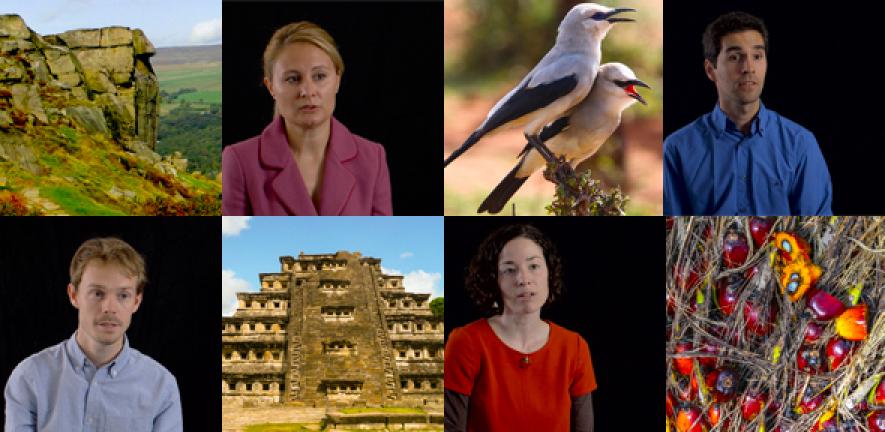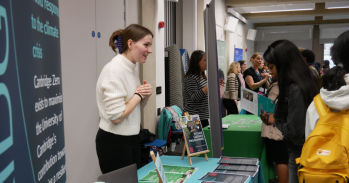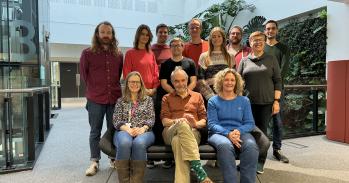
From the plight of the Ethiopian Bush Crow, to representation of nature in Winnie the Pooh, to the extinction of ancient Latin American languages, the wide breadth of research connected with biodiversity conservation at the University of Cambridge is reflected in a series of films released today.
From the plight of the Ethiopian Bush Crow, to representation of nature in Winnie the Pooh, to the extinction of ancient Latin American languages, the wide breadth of research connected with biodiversity conservation at the University of Cambridge is reflected in a series of films released today.
The series of videos focuses on mutual learning and collaboration between researchers within the arts and humanities, the natural and social sciences, practitioners, policy makers and citizens, all of whom are integral to understanding conservation problems.
Bhaskar Vira, University of Cambridge Conservation Research Institute
When most people think about biodiversity conservation they think about the importance of protecting the variety of life on Earth. They might not think about how the principles used to study species endangerment and its impacts on people are also used to understand the extinction of languages; or what nature writers like William Wordsworth can tell us about landscapes that previous generations took for granted but have become lost to us.
Now, a series of eight films released today by the University of Cambridge Conservation Research Institute (UCCRI) sets out to highlight these remarkable connections, demonstrating the breadth of research interests at the University that have the potential to intersect with 21st-century issues in biodiversity conservation.
Conservation research today has become a global and interdisciplinary field, raising complex issues such as how toxic waste sites in East Africa affect the increasing rarity of the cuckoo in the UK; or how the fashion industry impacts directly on the global water profile both in terms of water pollution as well as waste; or how our consumption of red meat affects climate change.
“The series of videos focuses on mutual learning and collaboration between researchers within the arts and humanities, the natural and social sciences, practitioners, policy makers and citizens, all of whom are integral to understanding conservation problems,” explains UCCRI Director, Dr Bhaskar Vira. “UCCRI provides a space to explore the understanding that emerges when disciplinary silos are broken down, and to foster productive – often mutually critical – dialogue between colleagues from across the University to promote a deeper engagement with the shared challenges that confront the future of humanity and the planet that we inhabit.”
The videos were filmed and produced by UCCRI’s Leverhulme Trust funded Artist in Residence, photographer Toby Smith. Each video showcases researchers from a range of University departments – plant sciences, zoology, social anthropology, English, architectural engineering, land economy, geography, and history and philosophy of science – relating their work and its relevance to conservation.
For example, Dr Jenny Bavidge (Faculty of English) shows how the arts and humanities are important to conservationists through recognising the need to establish conservation understanding in education and early childhood. “The science and the arts have got much better at speaking to each other and at coming up with new ways of thinking about the problems that are affecting us all,” she explains. “The new nature writing is where we are seeing this come together a lot – there’s immense interest and focus on children’s exposure and experience of the environment.”
In another video, Dr Charles Pigott, Leverhulme Trust Early Career Fellow from the Centre of Latin American Studies, explains how: “until recently, conservation has tended to focus either on natural heritage or cultural heritage, but today a new paradigm is emerging, the environmental humanities.” This collaboration of natural science, social science and arts and humanities has enabled conservation research to increase its scope and encourage the consideration of conservation issues from a much wider angle.
Natural scientists within conservation research are increasingly realising that their work relies not only on detailed biological knowledge but also on understanding social issues – learning the social rules of engagement in the country they are working in, how policy makers and governments operate and how to communicate effectively with the local people in order for their work to be of significance. Zoologist Andrew Bladon explains that, when working in Ethiopia on the Ethiopian Bush Crow and the White Tailed Swallow, local engagement was important “because tribal law is very strong and without the will of the local Borana leaders even the national park and the protection that it’s supposed to bring to the species would be ineffective.”
Conservation is primarily underpinned by human behaviour. Therefore understanding social factors is important. Plant scientist, Tommaso Jucker, is working on a project in south east Asia looking at the impacts of human disturbance and logging activities on the forests in these areas. For him collaboration is vital with disciplines that complement each other’s areas of expertise. Rosemary Ostfeld, a land economist, explores the social, environmental and economic aspects of palm oil production and it is crucial for her to liaise with stakeholders particularly to determine the effectiveness of initiatives she works with, such as the Round Table for Sustainable Palm Oil.
Dr Helen Curry’s work as an historian of science has a fascinating and novel approach to understanding how new scientific knowledge, tools and technologies shape people’s attitudes towards, and their interactions with, different aspects of their natural world. Curry studies contemporary conservationists and their continuing and increasing interest in using technologies as ways of conserving endangered species. Currently her research focuses on the entanglement of industrial agriculture and biodiversity.
Dr Max Bock explains that as an architectural engineer, sustainability issues are inherently multidisciplinary and require attention from several perspectives to be addressed adequately. He also explains how his work on bamboo as a sustainable building material has been taken up by NGOs internationally, a prime example of how researchers and practitioners can work together successfully.
“It is very important for critical thinking to have a cross-boundary between different disciplines and I think that’s what distinguishes a more overarching approach to research,” says geographer Anca Serban, whose work in India explores how to feed the world under a growing pressure from increased demands. “Whereas biodiversity aspects in conservation research focus on how we can minimise the impact on habitats and species, we have to weigh up the trade offs of managing conservation to ensure it does not impinge on people’s livelihoods or increase poverty, particularly in developing countries.”
UCCRI has become the hub for interdisciplinary work on conservation and sustainability across the University, and is part of the newly opened David Attenborough Building in Cambridge, along with nine conservation organisations that form the Cambridge Conservation Initiative (CCI).
The UCCRI team is keen to seek out researchers within the University who will benefit from the opportunities offered by this new campus at the heart of Cambridge. Alison Harvey, responsible for UCCRI Research and Communications and creative director of the interdisciplinary conservation videos, explains: “Many people may not immediately recognise their work as being relevant to debates about the conservation of biodiversity. We really want people to think out of the box in terms of how their work might relate to conservation and to contact us and find out about opportunities to collaborate with other researchers within the University, and with the organisations associated with CCI.”
Could your work make a difference to conservation? Contact UCCRI for an informal chat: uccri-administrator@conservation.cam.ac.uk

The text in this work is licensed under a Creative Commons Attribution 4.0 International License. For image use please see separate credits above.




